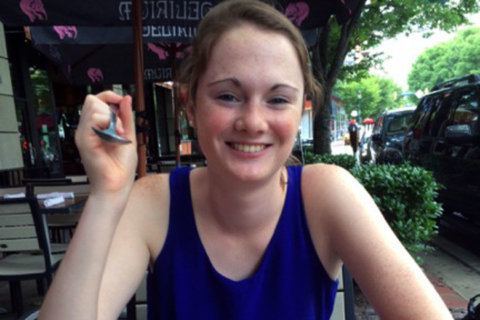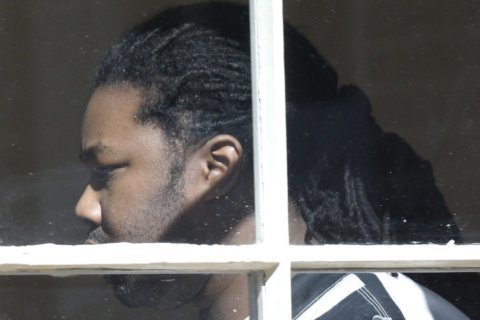Follow WTOP’s Live Blog for more on the Hannah Graham case.
MATTHEW BARAKAT
Associated Press
McLEAN, Va. (AP) — Police have revealed next to nothing about the evidence they have against Jesse Leroy Matthew Jr., and they won’t have to for months to come.
But his name is already familiar in Virginia, and linked by authorities to multiple crimes involving young women.
Charlottesville police identified Matthew as a suspect even before his arrest last week in Texas on a warrant alleging he abducted University of Virginia student Hannah Graham with the intent to attack her sexually. That strategy can potentially vilify an innocent person, some defense lawyers say. But a missing persons advocate said the judgment call was more than justified by the need to find her alive.
Matthew was scheduled to appear Thursday in court in Charlottesville for a bond hearing on the abduction charge, but his attorney has asked for a postponement. Attorney Jim Camblos said Wednesday that Matthew will now appear in court on Dec. 4. A separate hearing in county court on a reckless driving charge for Matthew is still scheduled for Thursday.
Graham has been missing since Sept. 13; a week later, Police Chief Timothy Longo described Matthew in detail without naming him, saying investigators wanted to talk to the “person of interest” and had searched his apartment because he was the last person to see her.
Matthew then showed up at police headquarters, asked for a lawyer, and then allegedly sped away, according to a police account. His exit prompted a warrant for “reckless driving,” a charge that Longo cited as he named the suspect and appealed for information from anyone who saw him with Graham the night she disappeared.
“I believe Jesse Matthew was the last person she was seen with before she vanished off the face of the Earth because it’s been a week and we can’t find her,” Longo said, adding that he also believed she had been in the suspect’s car.
While Matthew was a fugitive in Texas, Virginia police added a charge of abduction with intent to defile, a violent felony that under Virginia law compels suspects to submit to DNA testing.
Very quickly thereafter, Virginia State Police announced a “forensic link” to another infamous case at the university — the 2009 killing of Morgan Harrington, whose body was found in a hayfield three months after she vanished. That case, in turn has been linked by DNA evidence since 2012 to the rape of a woman in Fairfax, Va., who survived after a passerby startled her attacker, the FBI has said.
Police are not always eager to have a suspect’s name in front of the public. In northern Virginia, Alexandria police only reluctantly acknowledged their interest in Charles Severance as a “person of interest” this summer in three separate killings there over the last decade. Severance was eventually charged with all three murders, but before that Alexandria Police Chief Earl Cook said he did not want the public to develop tunnel vision and assume the investigation was over.
Experts say there’s a key difference in Charlottesville — police hope to find Hannah Graham alive.
“It’s always a judgment call,” said Bob Lowery, executive director of the National Center for Missing and Exploited Children’s missing children division.
But he said Charlottesville police have done an excellent job of keeping the public engaged in the search, and that if sharing suspects’ names can help find a missing person, that tips the scales in favor of identifying them.
“Even though the circumstances are dire, you have to hold out hope that Hannah is alive,” Lowery said.
Steven Benjamin, a Richmond defense attorney and past president of the National Association of Criminal Defense Lawyers, agreed that police acted appropriately in publicizing Matthew’s name as they sought tips from the public in their search for Graham.
And he said publicity can sometimes be as useful for defense lawyers as it is for police, because defense attorneys need information about the case as much as anyone.
Still, as a defense attorney, “one of the risks of publicly identifying a suspect is the risk of potentially vilifying an innocent person,” he said.
Steve Shannon, a former state lawmaker and prosecutor and now a criminal law professor at George Mason University, said early exposure of Matthew’s name won’t affect the legal process, since a judge will decide based on the law whether there’s probable cause to prosecute.
Passions will have cooled when the jury comes into the process months later, and court procedures to remove jurors who might be influenced by pretrial publicity are long-established and effective, he said.
“Cases rise or fall in a court of law, not in the court of public opinion,” Shannon said.
Copyright 2014 The Associated Press. All rights reserved. This material may not be published, broadcast, rewritten or redistributed.






